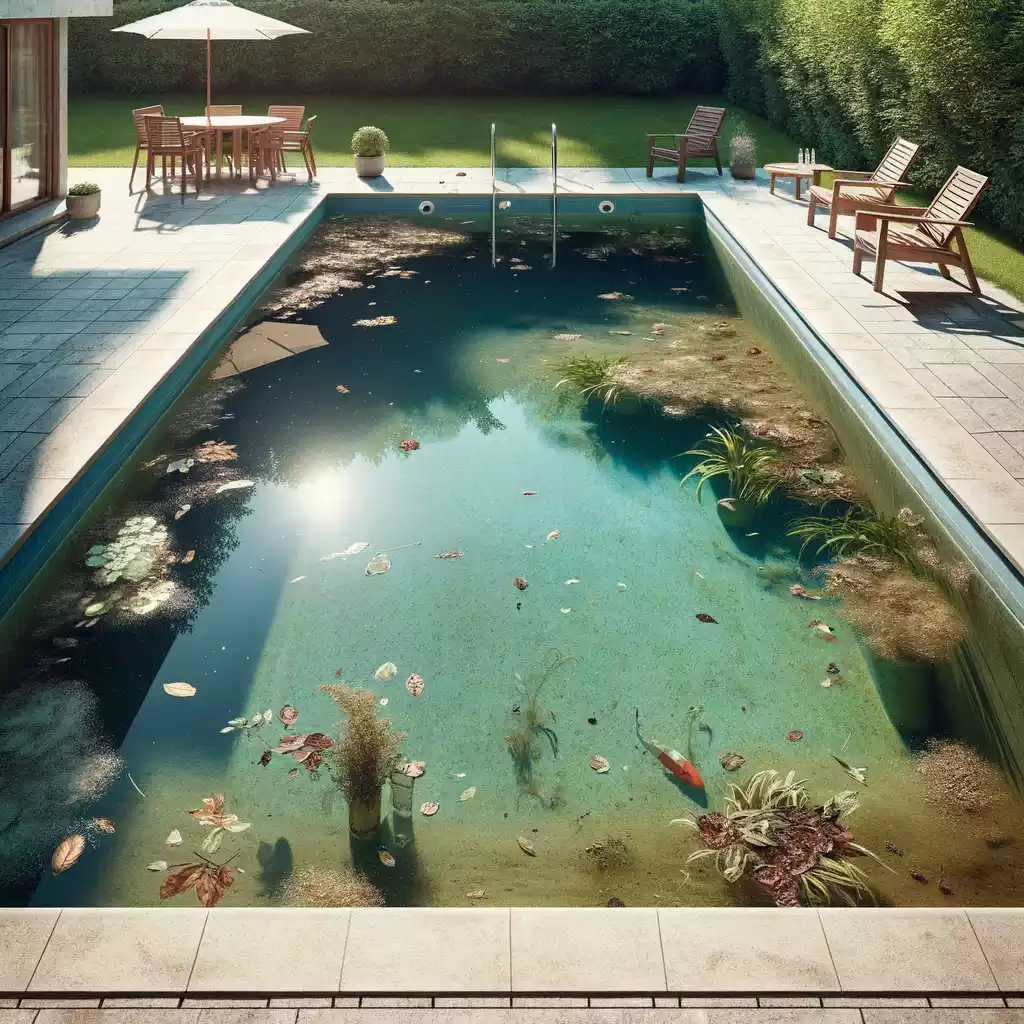Swimming pool water turning green and becoming cloudy is a common issue, especially on sunny days when algae thrive through photosynthesis, rapidly multiplying and making the problem more challenging. This condition not only affects the clarity of the water but also poses a significant disturbance to the overall pool environment. In such a rapidly changing environment, addressing this problem promptly becomes crucial. Therefore, if you find algae in your pool, delaying the cleaning process can not only harm your health but also require substantial time and money for remediation.

1、Manual Vacuuming
Automatic pool cleaners and robotic pool cleaners are not effective in removing algae.
2、Clean Pool Walls and Floor
Carefully scrubbing algae off the pool walls not only enhances cleaning efficiency but also allows disinfectants to penetrate the remaining algae better. For optimal results, we recommend using a sturdy pole-mounted pool brush to thoroughly clean the walls and floor of the pool.During cleaning, a robust pole-mounted pool brush effectively removes algae from the pool walls, ensuring a smooth and residue-free pool surface. This not only improves water transparency but also creates favorable conditions for subsequent disinfection treatments.
3、Check and Balance Water Quality
Use test strips, digital, or liquid alkalinity and pH test kits. High or low pH levels can cause pool shock.
4、Shock Treatment for the Pool
More resistant algae species require a more proactive approach, especially in severe contamination cases. To quickly and effectively eliminate algae, it is recommended to perform a shock treatment. Follow the instructions on the product packaging to determine the pool’s dosage, then multiply it by two, three, or four based on the type of algae.
Green Algae: Shock Treatment x2
Yellow or Dark Green Algae: Shock Treatment x3
Black Seaweed: Shock Treatment x4
5、Add Algaecide
The main advantage of algaecide is that it does not alter the water’s pH and effectively inhibits algae growth in the pool. Additionally, algaecide works synergistically with chlorine-based disinfectants to maintain balanced pH levels. Therefore, algaecide should be added after each shock treatment to retain chlorine.It is also recommended to add algaecide to the pool after it has been closed for a period other than swimming. A dark and humid environment provides an excellent opportunity for algae growth, but you don’t need new algae friends when reopening the pool during hot seasons.
6、Test Pool Water Again
Utilize conventional testing methods or send a water sample to a local pool store for analysis. Ensure that water chemistry is balanced and chlorine levels have returned to normal before allowing anyone back into the water.
In summary, keeping a swimming pool free from green algae is not just about quickly eliminating existing algae; it’s also a strategic preventive measure. Incorporating the above measures into your regular pool maintenance plan allows you to enjoy a clean and orderly swimming environment throughout the year.
 Instant
Quote
Instant
Quote Email
Us
Email
Us